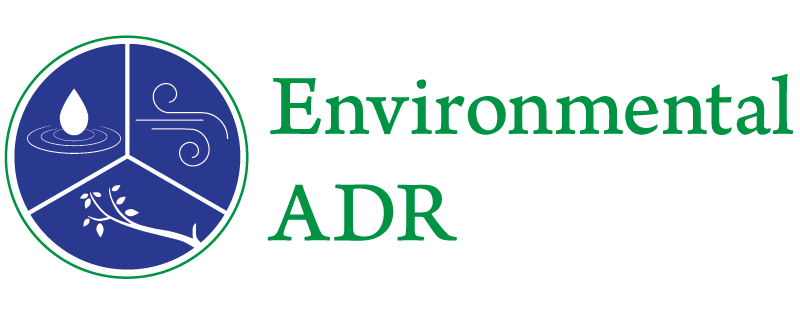“If it bends it’s funny; if it breaks, it isn’t.”
Woody Allen, from Crimes and Misdemeanors
 Flexibility is one of the most important attributes we need to develop in life. As Woody Allen reminds us, it is what separates comedy from tragedy; it’s what allows us to continue moving forward, without breaking, through the adversities we face in every day life.
Flexibility is one of the most important attributes we need to develop in life. As Woody Allen reminds us, it is what separates comedy from tragedy; it’s what allows us to continue moving forward, without breaking, through the adversities we face in every day life.
Flexibility is also one of the key attributes of mediation. It is an integral part of what makes mediation a powerful alternative to traditional litigation. In the mediator’s toolkit, there is nothing more essential than the ability to approach each dispute without preconceptions about the best path forward for resolving the conflict.
To illustrate the paramount importance of flexibility in mediation, I want to share with you my recent experience when I was asked to mediate a case between a university, the city and county in which it was located, and concerned groups of citizens. The parties were embroiled in controversy involving the university’s multi-year expansion plan and its potential effects on resources such as water, housing and traffic.
My first step was to meet separately with each party before I convened a joint session with all stakeholders. This is an initial step I frequently find to be useful in multi-party disputes. It allows me to meet and discuss privately with each constituency their respective views on the history of their dealings together, including their inability to come to an agreement among themselves, to identify the impediments to settlement, including views and misconceptions they hold about other parties, to learn what are important elements of a successful negotiation, and to hear their personal ideas on workable settlement structure and content – their wish lists.
In this particular case it soon became apparent that the inability to reach agreement prior to the mediation was due in large part to their inability to communicate clearly and comfortably with one another. Past dealings and strongly held personal viewpoints had interfered with the exchange of proposals, the parties’ respective views on the proposals and parties’ making them, and their ability to respond in ways that propelled negotiations forward, toward settlement.
I decided that establishing a framework for settlement called for separating the present negotiation from past efforts. We accomplished this by starting off with a session aimed at dispelling misconceptions which I had observed, beginning to build trust in the process, and even though it was early in the process, starting to map out the zone of potential agreement. The parties found this to be a hopeful start. [Read more…]

 New York State and City take pride in being leaders and trendsetters when it comes to legislative and regulatory action to protect consumers in a number of areas, including banking and insurance and commercial transactions.
New York State and City take pride in being leaders and trendsetters when it comes to legislative and regulatory action to protect consumers in a number of areas, including banking and insurance and commercial transactions. There are no universal rules governing mediation agreements.
There are no universal rules governing mediation agreements. We live in a world of ever-growing concern about environmental harm to our health and well-being. As the science of detection improves, so does our awareness of large-scale releases of contaminants into the air, water and soil, which can affect large numbers of people and their property.
We live in a world of ever-growing concern about environmental harm to our health and well-being. As the science of detection improves, so does our awareness of large-scale releases of contaminants into the air, water and soil, which can affect large numbers of people and their property.
 A New York Times
A New York Times 
 There has been a lot of news recently about large-scale releases of contaminants into the air, water and soil, which have affected large numbers of people and their property. One such example is the discovery of high concentrations of lead in Flint, Michigan’s drinking water system. Another is the ongoing release in Southern California of large volumes of natural gas into the soils below the homes of residents living there. Other examples include the oceanic release of oil into the Gulf of Mexico, and the widespread property damage caused by hurricanes Sandy and Katrina to many thousands of people living in their paths.
There has been a lot of news recently about large-scale releases of contaminants into the air, water and soil, which have affected large numbers of people and their property. One such example is the discovery of high concentrations of lead in Flint, Michigan’s drinking water system. Another is the ongoing release in Southern California of large volumes of natural gas into the soils below the homes of residents living there. Other examples include the oceanic release of oil into the Gulf of Mexico, and the widespread property damage caused by hurricanes Sandy and Katrina to many thousands of people living in their paths. I’d like to put some meat on the bones of the cost-saving aspects of environmental mediation. I have argued that environmental mediation, properly executed, provides the opportunity to eliminate costs of duplicate work by multiple parties, while preserving every party’s right to negotiate hard on the merits of the dispute and to reach an agreed-upon allocation of the costs of dealing with the contamination at issue. In this blog, I present a hypothetical situation – based on successful mediations I have conducted – to help the reader understand why I say this.
I’d like to put some meat on the bones of the cost-saving aspects of environmental mediation. I have argued that environmental mediation, properly executed, provides the opportunity to eliminate costs of duplicate work by multiple parties, while preserving every party’s right to negotiate hard on the merits of the dispute and to reach an agreed-upon allocation of the costs of dealing with the contamination at issue. In this blog, I present a hypothetical situation – based on successful mediations I have conducted – to help the reader understand why I say this. Lawyers are creatures of habit. We are steeped in it. It starts with the training we receive in law school where we are taught a series of rules and procedures to be followed in all legal proceedings. In litigation the rules cover everything from cradle to grave, starting from the initiation of a lawsuit through trial and final appeal. The rules are intended to guarantee that each case will receive identically fair consideration and due process protections, irrespective of who the parties are or the nature of the dispute. Everyone is entitled to equal treatment and the process is the same for everyone. Every case is handled the same way.
Lawyers are creatures of habit. We are steeped in it. It starts with the training we receive in law school where we are taught a series of rules and procedures to be followed in all legal proceedings. In litigation the rules cover everything from cradle to grave, starting from the initiation of a lawsuit through trial and final appeal. The rules are intended to guarantee that each case will receive identically fair consideration and due process protections, irrespective of who the parties are or the nature of the dispute. Everyone is entitled to equal treatment and the process is the same for everyone. Every case is handled the same way.
